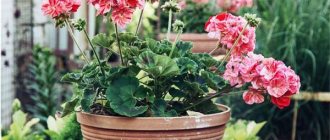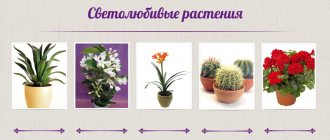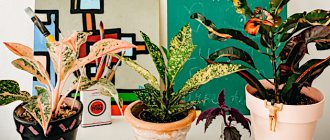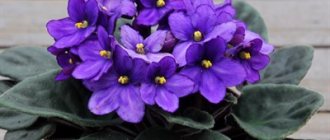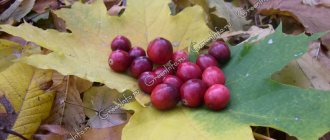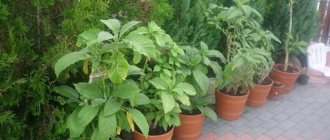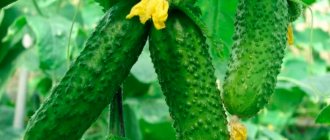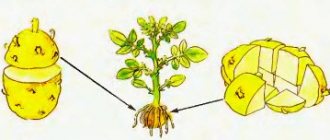Bright greenery on the windowsill will help diversify your interior. Indoor plants delight and lift your spirits not only in summer, but also in frosty winter.
There is a wide variety of unpretentious flowers that can bloom all year round. For many of them, minimal care is enough. Since almost all bright plants were brought from hot tropical countries, their flowering continues for quite a long time.
- 2 Balsam
- 3 Begonia
- 4 Hibiscus
- 5 Clivia
- 6 Koleriya
- 7 Pelargonium
- 8 Ruellia
- 9 Spathiphyllum
- 10 Fuchsia
Abutilone
Belongs to the Malvaceae family. Another name is “Rope Man”. Its fibers are used to make strong ropes and cables. Origin: Asia and South America.
The plant is often compared to a maple because of the shape of its leaves. The flowers look like small lanterns.
Blooms from spring to autumn. With decreasing light, flowering is reduced, but it can be extended. Regular lamps will help.
Unpretentious, requires only watering and a constant source of light. Abutilone grows quickly, so you need to cut off almost half of the new shoots. The best time for this is spring.
The emergence of new plants is carried out using cuttings in spring or summer. The soil is a mixture of turf, leaf soil, humus and sand. Requires special feeding. Potassium nitrate and superphosphate work well.
Main criterion
Sometimes the pace of life leaves little time for hobbies and even simple household chores. What to do when the soul so wants to surround itself with living plants, but caring for them can become a problem?
There is an exit. There is a so-called unpretentious group of decorative flowering potted plants. They easily adapt to the conditions offered by a particular apartment and do not require complex and constant care.
Due to the variety of species, it is possible to choose a plant with an interesting flower shape and color. Some of them are able to delight with their beauty all year round, which means that even in winter the room will have its own piece of summer.
Balsam
Belongs to the Balsaminaceae family. Botanical name: Touch-me-not. It is due to the fact that the fruits, when ripe, are able to open themselves when touched. The birthplace is Asia and Africa.
The plant has oblong leaves with jagged edges. Most common color:
- white;
- red;
- pink.
During flowering, from June to October, the flowers look like blazing fires.
The plant is light-loving, but bright sunlight should be avoided. Loves moisture; during hot periods it is advisable to spray the leaves with water.
If there are several pots with balsam or other plants in the room at once, then they need to be placed at a distance from each other. They do not tolerate the company of other flowers well and may shed their leaves.
After a few years, the balsams need to be replanted. Thanks to this they will bloom better. Cuttings from the top are used to produce new plants. The soil should consist of a mixture of humus, sand and leaf soil.
Which plants will bloom constantly with careful care?
If you don’t mind the capricious nature of many beautiful potted flowers, then you can choose your green friend from the “picky” group. Orchids, indoor roses and other plants that are demanding in terms of conditions and care require constant care.
Akalifa
The plant prefers a bright location. It is distinguished by spectacular flowering in the form of fluffy earrings or tails. Therefore, it deserves the popular name “fox tail”.
If there is little light, the shoots become elongated and the color of the leaves and flowers fades. At noon, shading from the midday sun will be required. During the growing season, the soil in the pot should be slightly moist. The dormant period lasts from November to February. At this time, akalifa is watered sparingly and not fertilized. The plant should overwinter in a warm, sunny place at a temperature of 16–18°C.
Anthurium
The plant blooms up to 300 days a year and decorates the space with its bright bracts. Needs breaks to rest between blooms.
Anthurium is placed in a bright place, protected from drafts. Favorable temperature for an indoor flower is from 18 to 20°C. The root ball in the pot should be kept evenly moist. Water the anthurium with warm rainwater 1-2 times a week.
Anthurium – flower “Men’s happiness”.
Beloperone
With careful and careful care, the plant blooms almost all year round. Small flowers are hidden in the axils of bright bracts, which retain their colorful appearance for a long time.
Beloperone requires good lighting with protection from the midday sun. Temperature in summer is from 18 to 20°C, in winter – from 12 to 16°C. During the growing season, water abundantly and humidify the air around the flower. In cool conditions, watering is reduced.
Phalaenopsis orchid
Phalaenopsis is the most famous and popular genus of the Orchidaceae family. Phalaenopsis is well adapted to indoor conditions. The plant feels great on the windowsills of eastern and south-eastern windows.
Phalaenopsis blooms often and for a long time - up to 3 times a year, for 2-6 months. After each flowering, it is recommended to place the orchid in a cooler place. This makes it easier for new stems with buds to grow.
Spathiphyllum
A popular plant for shady corners of the home or office. Spathiphyllum can bloom continuously or bloom from June to September, then take a break for 3 months, after which flower stalks grow again in January.
Although this is a mostly shade-loving houseplant, it is contraindicated to be constantly away from the light source. Blooming spathiphyllum needs a certain length of daylight and better lighting than during the dormant period in late autumn.
How to care for spathiphyllum
Begonia
Belongs to the Begoniev family, which has many species. Homeland of origin: South America.
Asymmetrical leaves with a beautiful white-green or dark green color. Its small buds can be of different colors.
Good care promotes flowering all year round. Loves plenty of light, but in bright sun the leaves and flowers fade. Unpretentious to temperature. There should be optimal humidity around the flowers. Excessive moisture can cause the death of the plant.
New side shoots are pruned to maintain a beautiful shape. To get a young plant, you need to put the cut stem in water so that it develops roots. The best soil option is a mixture of sand, leaf soil, peat and black soil.
Beautiful fuchsia and fragrant oleander
A flower with pink buds called fuchsia has been grown indoors for about 200 years. This amazing indoor plant, due to the unusual shape of the buds, is called by some lovers “Japanese lantern”.
Fuchsia varieties and hybrids are full of variety, but the most delicate of them are always endowed with pinkish petals.
The flower looks like this:
- A small bush with very flexible shoots.
- The leaves are oval, green or with a reddish tint. The edges are jagged.
- The drooping fuchsia bud is represented by a bright calyx, in the center of which there is a bunch of long stamens and a horizontal corolla with bent edges.
Fuchsia
Shoots can take any shape. With the help of various supports, fuchsia can be grown as an ampelous, bush, pyramidal or standard plant.
Oleander is also a flower with pink flowers, although the coloring of different varieties varies. It is also called pink laurel. In the photo there is always a noticeable resemblance to this noble plant. The flower can be described as follows:
- In a room, the bush can reach 2 m.
- The leaves are glossy, very similar to bay leaves.
- The buds are simple and double. When opened, they emit a very delicate, pleasant aroma.
Attention! The sap of the oleander plant is poisonous, so you need to work with it carefully, wearing gloves.
Hibiscus
Belongs to the Malvaceae family. Homeland of origin: India and China. The second name is Chinese rose.
When the plant blooms, large flowers of red or white shades with bright corollas at the base are observed. Blooms from spring to autumn.
Loves sunlight and plenty of water. Without watering, all the flowers fall off. The best soil for hibiscus is a mixture of turf, humus, sand and peat. In summer, feeding is required.
New cuttings are placed in water or sand, where roots already appear. It is better to replant them in the spring. Mature plants require replanting every few years.
Hibiscus can be shaped into a bush. For this purpose it is pruned. Thanks to this, new young shoots are better formed.
Anthurium
A plant with a rather exotic appearance. People call it men's happiness, since it is one of the simplest and most unpretentious flowers to care for. It is not difficult for him to adapt to the climate in the apartment.
It is very easy to recognize the plant: it has large, wide leaves with a dark green color and an unusual flower. It's all about its shape. At first glance it appears to be a rich red, but in fact it is a leaf. But the flower is the yellow spadix that is located above it. Such an unusual and bright accent will transform the room. Bright red pillows or curtains go well with it.
Clivia
Belongs to the Amaryllis family. Origin: South Africa.
The plant has unusual long and dark leaves. Blooming is characterized by the appearance of large orange flowers in the center with yellow in the middle. They are shaped like bells. Quantity – from 20 to 40 pieces.
It blooms from winter to summer if mineral fertilizers are added to the soil. Can be in the light or in the shade. With proper watering and feeding, the plant can bloom in rooms with poor lighting.
For abundant flowering in autumn and winter, clivia prefers a cool temperature of 12-14 ºC and light watering. In summer, the plant needs to be watered more abundantly.
During flowering, the pot with the plant should not be disturbed by moving it to another place.
Shoots periodically appear near the main plant. They must be separated from adult clivia by replanting them in other pots with soil. It should be made from a mixture of turf, leaf soil, humus, sand and peat.
Cyclamen and azalea
A flower with pink flowers, cyclamen or drywort, pleases with the appearance of buds in late autumn and winter. In the hot summer, the above-ground part of the plant dies off, and its tuber “sleeps.” In general, the flower looks like this:
- The round-shaped tuber is almost completely hidden in the soil.
- At the end of summer, a rosette of many leaves grows in the center of its above-ground part.
- Peduncles are located in.
- The flowers are very bright, interesting in shape, reminiscent of butterflies with raised wings.
- The petals come in a variety of colors - it depends on the variety. In most varieties they are pinkish in color and vary in intensity.
Cyclamen
After the bud opens, the petals remain for about 10 days. Up to 100 buds are formed on one plant per season. Cyclamen does not require complex care. The main thing for its normal growth and development is to ensure a cool temperature.
Azalea – This pink-flowered flower is a member of the rhododendron family and is also favored by gardeners. Some call it the most beautiful flowering plant you can grow indoors.
Azalea can be described as follows:
- A highly branched, low bush (up to 30 cm tall).
- Leaves are elongated.
- Azalea flowers can be simple or double.
- The petals are corrugated and fringed. Their color depends on the variety, but most often they are various shades of pink.
Azalea
Just like cyclamen, azalea requires coolness. Under normal indoor conditions, a potted crop brought from a greenhouse quickly dies.
Advice. By separating the space on the windowsill from the room, for example with plywood, glass or plastic, you can create suitable conditions for cold-loving flowers.
Koleriya
Belongs to the Gesneriev family. Homeland of origin: South America.
An exotic plant. Characteristic are elongated, bell-shaped flowers covered with fibers. Common colors: red, orange and pink. The flowers are not monochromatic, they have inclusions of a different color. The plant blooms in summer and autumn.
Koleria needs high humidity, moderate temperature and watering. It is not recommended to spray the leaves with water, as this can ruin their appearance. Instead, you can spray water around the plant. The flower needs to be provided with a lot of light, but without bright sunlight.
The soil should consist of a mixture of sand and peat. In the summer, it needs to be fed with liquid fertilizers, which are used for orchids.
To create new plants, the following are used: dividing rhizomes, leaves, cuttings, and seeds.
Large summer flowering plant species
Sometimes you want a plant to please with large flowers, which is why in this section of the material we have collected some of the largest indoor summer flowers.
Adenium obesum, or adenium thick, “desert rose”)
By its nature, thick adenium is a desert tree. In hot regions of Africa and Saudi Arabia, it grows up to 3 meters (!) and has a thick trunk.
The domestic tree variety looks like a bonsai. Neat, exotic and yet completely unpretentious!
The highlight of the plant is the thickened trunk and large (against the background of the shoots) flowers with a uniquely harmonious shape.
The natural color of the petals is soft pink. But varieties with white, red, dark cherry flowers have been bred.
Care
Adenium thickis is a succulent adapted to dry desert conditions and abundant sun. The 2 basic conditions for its cultivation are summer sun and winter rest.
The more light it receives in the summer, the better it blooms. Also, in hot weather, the plant needs a sufficient amount of moisture (the soil must dry out well).
However, in winter it vitally needs a period of rest - to lay new buds and buds.
When the plant sheds its leaves, you need to provide it with moderate coolness (10-15 degrees, no lower), partial shade and water occasionally (once a month).
Flowering time
During the summer, the tree can bloom for 2-3 months.
Role in the interior
This tree is intended for African or any ethnic interior in warm colors.
Lobivia Zhajoyan
Lobivias are the most unusual decorative cacti with large flowers.
Lobivia Zhajoyan is a typical and unpretentious variety.
Her escape resembles a ball. And the main feature is the flowers, which resemble bright glasses and can exceed the size of the stem.
Care
Lobivia has the resilience typical of cacti: it easily adapts to heat, slight coolness, and does not require frequent watering. For her, it is only important that the air is moderately dry and the earth remains dry.
Plus, in winter, the plant needs a dormant period at a temperature of 10-14 degrees for flower buds to form.
Flowering time
May-August. The lifespan of one flower is up to 3 days.
Role in the interior
Blooming lobivia looks exotic, so it will fit perfectly into a colonial or tropical interior.
Pelargonium
Belongs to the Geraniaceae family. Origin: South Africa. Resembles garden geranium. Pelargonium is just a houseplant.
Can be completely different colors. The flowers are collected in large inflorescences. In a warm room it blooms all year round, except December and January.
Its smell has the ability to repel insects and disinfect the air. It is not recommended to place the plant in a room where people sleep, as it may cause headaches. The best place for pelargonium is the kitchen or living room.
The plant loves sunlight, so it needs a place on the windowsill. In summer, the flower needs abundant watering, but not very often. In winter, moisture is required in a minimum amount.
Sometimes pelargonium needs to be pruned, as it has the ability to grow greatly. The young plant is replanted every year. Seedlings are obtained using cuttings.
The plant pot should not be too large for best flowering. The soil is a mixture of turf, leaf soil, humus and sand.
Feeding and fertilizing flowering indoor plants
The growing season is a time of increased consumption of nutrients by plants. They are found in fertilizers and various home remedies. Fertilizing is carried out after abundant watering with clean water. Fertilizer will be beneficial only if all other conditions are favorable for flowering and there are no serious errors in care.
It is recommended to feed the plants after the buds appear. Fertilizer application should continue until flowering ends. The frequency of fertilizing for most indoor plants during the growing season is 2 times a month. You should not fertilize in cold, cloudy weather, as battery consumption is reduced.
It is convenient that flower shops and supermarkets sell liquid fertilizers, biostimulants and phytohormones. For example, the drug Top Max contains humic acids and is used to stimulate flowering. Bio Bloom is a liquid organic fertilizer rich in phosphorus and potassium, which are necessary for the development of buds. Flower growers also use folk stimulants: banana peels, wood ash infusion, aloe juice. Read more in the article: Feeding indoor flowers with home remedies.
By choosing several types of flowering plants, you will create a bright and cheerful atmosphere in any room. It is impossible to look at the beauty of home flowers indifferently. They not only decorate, but also delight, lift your spirits, and have a beneficial effect on the psychological climate in the house.
Ruellia
Belongs to the Acanthus family. Homeland of origin: South America.
The flowers of the plant are large and can reach 5 cm. They are white, red or pink. The flowers of this subshrub bloom one day, replacing each other.
The flowering period lasts from February to late autumn. In dark rooms this period is reduced to 4 months.
They love bright light, but not direct sunlight. Watering should be plentiful so that the soil is not in a dry state, but is always moist. A pot of ruellia can be placed on moss, which retains moisture.
The plant does not like not only drafts, but also extreme dryness. Because of this, leaves may fall off.
You can renew the plant using cuttings, layering, or simply dividing the bush. The soil should contain a mixture of turf, leaf soil, humus and sand.
Mandevilla and geranium
A very interesting flower with pink flowers, which is grown indoors as a vine. By installing a suitable support, the mandeville can be shaped into any shape.
The appearance of the mandevilla is as follows:
- The stems are climbing, very long (up to 3 m).
- The leaves are elongated, shiny, slightly corrugated.
- The buds are simple, gramophone-shaped. Consist of 5 petals.
- The flower in the center is yellow.
Mandevilla
Mandevilla cannot be called demanding. She loves light, warmth and moderate watering.
The well-known geranium, which began to be grown on windowsills a long time ago, is also rich in varieties with pink-colored petals.
Geranium looks like this:
- Branched bush with low shoots. There are ampelous types.
- The leaves are round in shape with a pubescent edge.
- The flowers are simple and double shaped. Their size and color depend on the variety.
- A huge variety of varieties have been developed that have pink inflorescences.
- The culture does not require care. Feels great both in the room and on the balcony and loggia.
You can always create a certain atmosphere at home with the help of indoor plants. If most of them are endowed with pink buds, then romance and love will always be felt in the home.
Spathiphyllum
Belongs to the Araceae family. Origin: East Asia and South America.
Recognizable by its characteristic large white flowers. They have a glossy surface, like the leaves.
Blooms from spring to autumn. Loves high humidity, warmth, but without bright sunlight. You need to spray the leaves. Tree bark, coal and brick chips are added to the soil.
Under bad conditions the plant does not die. Instead, flowering deteriorates. A seedling is obtained by separating its part with roots from the main bush.
Small plants in pots
Small plants with beautiful flowers are mostly successful results of artificial crosses. Although, this fact does not deprive them of aesthetic value at all.
Violets
Like, for example, miniature violets, or dwarf Saintpaulias. The size of an ordinary violet is not impressive in its dimensions, but a miniature copy of Saintpaulia is a phenomenon that causes surprise and admiration.
On the shelves of specialized stores you can find several varieties of mini-violets: midi - their rosette diameter is about 20 cm, micro - with a rosette diameter of approximately 6 cm, mini - which barely reaches 15 cm in diameter.
Despite the small size of the bush, the flowers of such varieties are interesting because of their rather large dimensions and have a wide variety of colors.
Flower shapes are also rich in variety: star-shaped, terry to the touch, ordinary, bell-shaped, and so on. Regarding care, keeping miniature plants at home is practically no different from other varieties of violets.
But, you will need much less space to place them. When you want to get new varieties of plants at home, but your apartment conditions do not allow you to do this in full, there is a reason to study the offer of the market for small indoor flowers.
Kalanchoe
Miniature Kalanchoes, despite their attractiveness, can be found on sale quite rarely. If an ordinary Kalanchoe has a height of about 25 cm, then for dwarf representatives of this species it is standard height - within 15 cm. Dwarf varieties, with beautiful multi-colored flowers (from red to cream) are nothing more than the result of the painstaking work of breeders in crossing varieties.
Just like other varieties of Kalanchoe, their mini versions are quite flexible and do not require special attention and care. Timely and high-quality watering, proper fertilizer, professional pruning and timely replanting will be enough for them.
Roses
Dwarf roses are small indoor plants, available for sale in almost all flower shops, and are also in special demand and interest among buyers.
And this is very justified: their floral delicacy captivates the eye, and the miniature size of the plant itself as a whole makes it possible to grow it even in rooms with a very small area. But, before you start a mini-rose in your apartment, you should think it over carefully. It is one of the most capricious and whimsical plants.
House flowers, amazing with the beauty of their patterned leaves, are no less charming than their collection with beautiful and colorful inflorescences. Bright and lush greenery will be a chic addition to any interior style.
Gelksina
The dimensions of the apartment in this case are not particularly important. In flower shops, the selection of miniature foliage plants is quite large. For example, helxina or soleirolia is interesting for its very miniature leaves, the length of which is about 7 mm and shoots that resemble thin threads. This variety with such “model sizes” is an ideal creation of nature itself.
Throughout Italy and in the southern part of Spain, you can observe huge glades of helxines. They can grow both in wooded areas and on mountain slopes. In the northern parts of the regions, residents grow this amazing plant at home, using ordinary flower pots for planting.
In them, helxina forms surprisingly spectacular spherical bushes of silver or golden color. Maintaining this type of plant at home does not require any special physical, time or financial costs. They are quite flexible and unpretentious. The only condition they need to provide is freshness and cleanliness of air.
Flower growers who do not have much experience quite often confuse Nertera with Helxina.
Nertera
Externally, they do have some similarities: the shape and color of the foliage, thin shoots. Their main difference lies in the fruits, which appear in the summer and have a bright scarlet color.
The berries are valuable for their unusual decorative appearance and are the main decoration of the nertera bush. Growing nertera does not require special gardening skills or a lot of time.
It will be enough for her to organize a certain period of rest and carry out correct and timely pruning. The plant is ideal for growing in small spaces.
Fittonia
It has several varieties that differ from each other in their wonderful patterns on the leaves. The patterns can be indicated by either gray or pink veins or spots of various shapes, sizes and colors from gray-violet to bright green.
The shape of the foliage can also be different: wavy, pointed, rounded, elongated, and so on. The splendor of these varieties is nothing more than the result of the work done by the breeders.
Fittonia stems spread along the ground, but do not grow too much. Fittonia is rightfully considered an excellent choice for those who want to grow flowers at home. It is very original and interesting, but it is compact and does not require much space.
